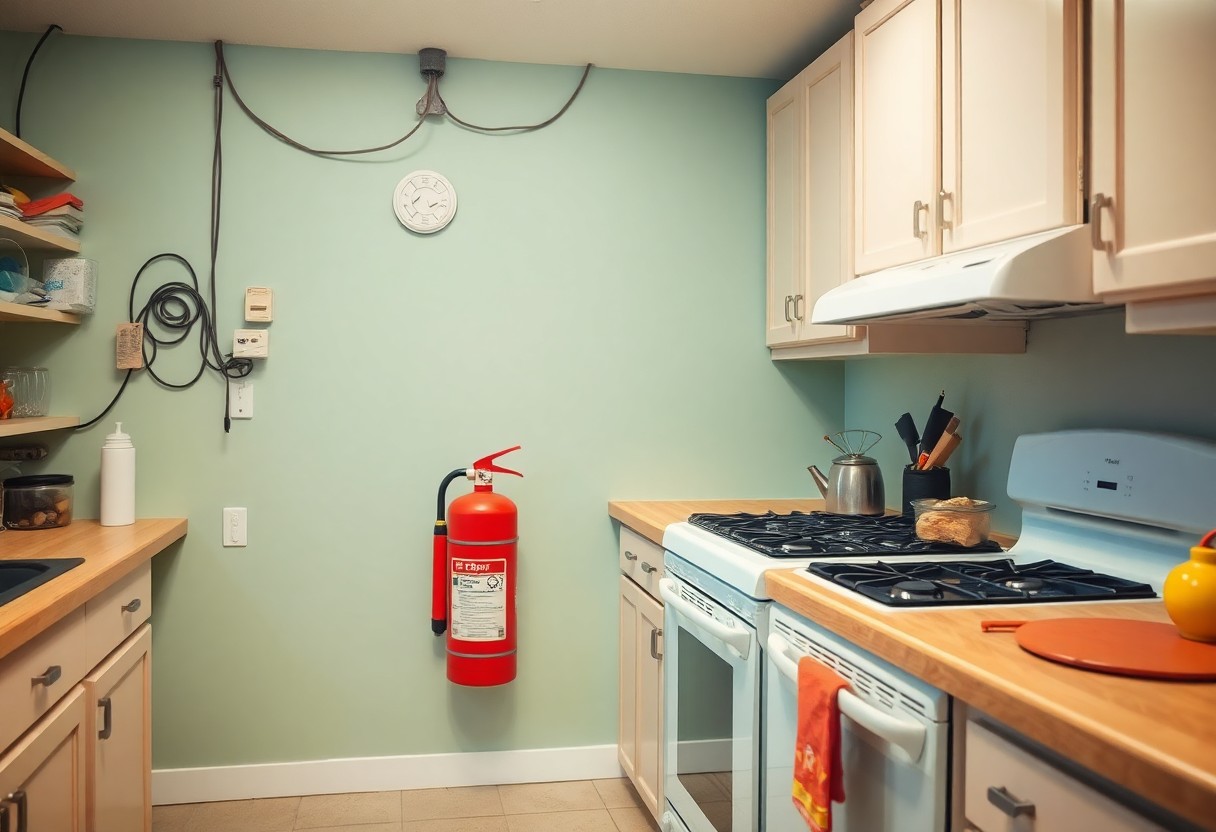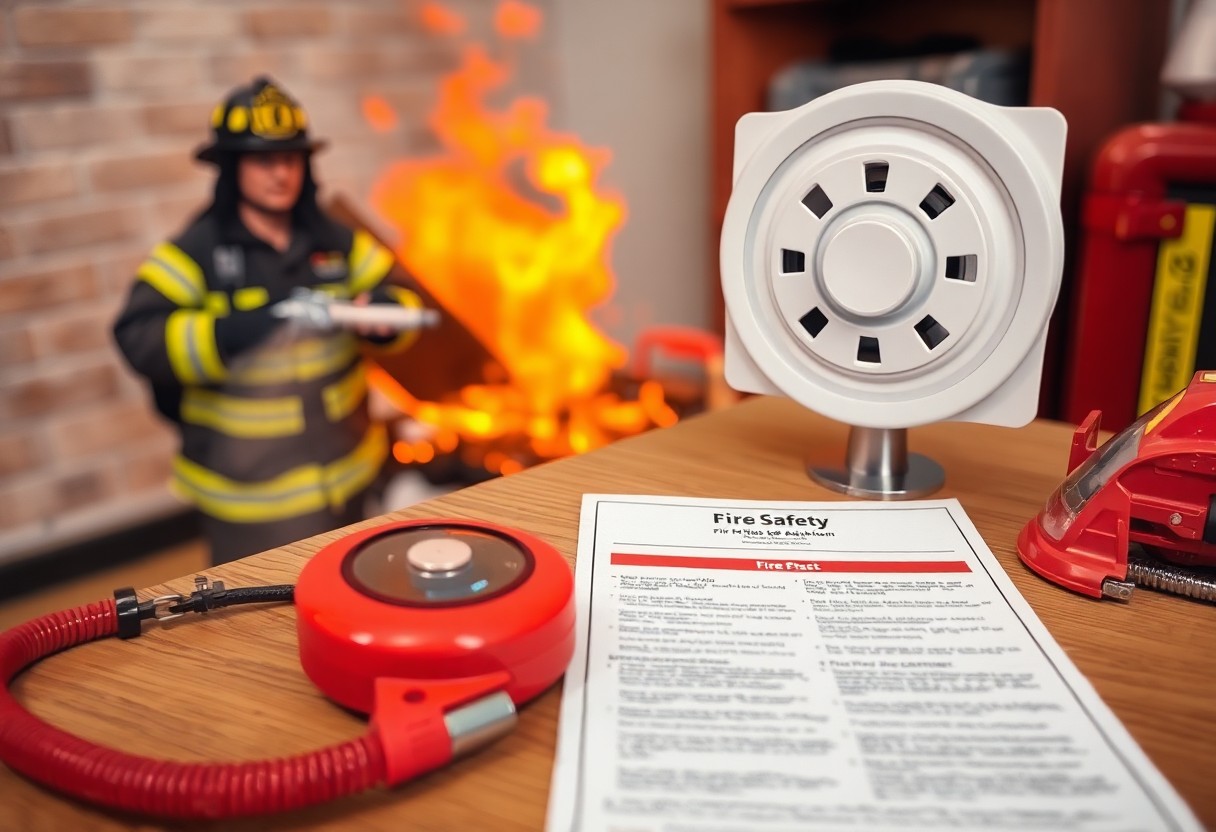Just as you take steps to safeguard your health, it’s vital to assess and eliminate fire hazards in your home. Awareness of common risks, such as faulty wiring, unattended cooking, and improper storage of flammable materials, can make a significant difference in fire prevention. In this guide, you’ll discover vital tips to identify these dangers and actionable strategies to ensure your living space is safer for you and your loved ones. By taking proactive measures, you can create a more secure environment in your home.
Understanding Fire Hazards
While fire can be a vital part of your home for cooking and warmth, it also poses significant risks if not managed properly. Understanding fire hazards is imperative to keeping your living space safe. This involves recognizing not only the various sources of heat and flames in your environment but also how everyday items can ignite or exacerbate a fire. Keeping informed about these risks will empower you to take proactive measures to safeguard your home and family.
Common Sources of Fire Risks
Now, let’s examine some common sources of fire risks in your home. These can range from kitchen appliances to heating equipment, and even items as innocuous as paper or fabrics. Each potential source requires your awareness to reduce the likelihood of a fire starting.
Factors Contributing to Home Fires
Some factors that contribute to home fires include clutter, improper use of appliances, and electrical issues. Addressing these concerns can greatly reduce fire risks in your home. Key factors to consider include:
- Neglected smoke detectors
- Overloaded electrical outlets
- Poor maintenance of heating appliances
- Excessive debris around potential heat sources
Any of these elements can elevate your risk of experiencing a fire incident, so it’s important to be proactive.
Home maintenance plays a significant role in preventing fires. Keeping your space organized and ensuring that appliances are in working order is imperative. Additionally, educating yourself and your family about fire safety can be beneficial. Consider the following preventive measures:
- Regularly check and change smoke detector batteries
- Keep flammable materials away from heat sources
- Schedule routine electrical inspections
- Utilize cooking appliances safely
Any oversight in these areas can lead to increased fire risks, so taking action is imperative for your safety and peace of mind.
How to Identify Fire Hazards
There’s a vital need for you to identify potential fire hazards within your home. Whether it’s uncluttered pathways, faulty wiring, or improper storage of flammable materials, recognizing these risks can significantly reduce your chance of experiencing a devastating fire. Conducting regular assessments of your living space allows you to pinpoint and address hazards before they lead to an emergency.
Conducting a Home Fire Assessment
Conducting a home fire assessment involves systematically inspecting each room for potential fire hazards. Start in the kitchen, where hot appliances and cooking materials may pose risks. Check for frayed cords in the living room, debris near heating sources, and proper storage of flammable liquids throughout the home. Don’t overlook outdoor areas, ensuring that paths and exits are clear and that outdoor equipment is properly maintained.
Recognizing Warning Signs
The awareness of warning signs can play a key role in fire prevention. Signs like flickering lights, warm electrical outlets, or a persistent burning smell are indicators of possible trouble that should not be ignored. Assessing these signs immediately may help you prevent larger issues from developing.
Fire hazards often present warning signs long before an emergency occurs. You might notice strange noises, such as crackling from electrical panels, or see too many appliances plugged into a single outlet. Be attentive to signs of smoke or excessive heat where there should be none. These signals indicate malfunctions or risks that require prompt investigation and, if necessary, professional assistance, ensuring your home remains a safe environment.
Preventive Measures
Clearly, implementing preventive measures can significantly reduce the risk of fire hazards in your home. Regular inspections, proper storage of flammable materials, and investing in smoke detectors are just a few strategies to keep your loved ones safe. Staying educated about fire risks and planning escape routes can further enhance your preparedness. Maintaining vigilance will help you create a safer environment.
Tips for Fire Safety in the Kitchen
Measures for fire safety in the kitchen are crucial since cooking is the leading cause of home fires. Always stay in the kitchen while frying, broiling, or grilling food, and keep flammable items away from heat sources.
- Keep a fire extinguisher nearby.
- Avoid using water on grease fires.
- Regularly clean your kitchen appliances and stovetops.
- Wear tight-fitting clothing while cooking.
Perceiving potential hazards and taking proactive steps can make a significant difference.
Electrical Safety Practices
Electrical safety practices are vital for preventing fire hazards associated with electrical systems in your home. You should regularly inspect cords and plugs for fraying or damage and avoid overloading outlets.
This proactive approach includes using appliances as directed, ensuring your home has sufficient circuits for electrical demands, and not daisy-chaining power strips. Annually having an electrician examine your wiring will catch potential issues before they become dangerous. By adhering to these electrical safety practices, you can significantly minimize the risk of electrical fires in your home.
Safe Storage Solutions
Not taking proper precautions for storage can lead to serious fire hazards in your home. It’s important to implement effective storage solutions for items that may increase fire risks, ensuring that your home remains a safe environment. Utilize appropriate containers, keep flammable materials away from heat sources, and maintain clear access to exits to minimize potential dangers.
Managing Flammable Materials
The safe management of flammable materials in your home is vital. Store items such as gasoline, paint thinners, or even cleaning supplies in a cool, well-ventilated area, ideally in a locked cabinet or shed. By keeping these materials secured and away from ignition sources, you significantly reduce the risk of accidental fires.
Organizing Household Items
Materials that are often overlooked can also contribute to fire hazards if not stored properly. Items like paper products, textiles, and even clutter can fuel a fire. Ensure that your household items are organized and kept away from heat sources such as stoves or heaters. This not only makes your home safer but also more functional.
Organizing your household items efficiently minimizes clutter and helps prevent fires. Designate specific areas for different categories of items, ensuring that flammable materials are stored properly and not mixed with everyday belongings. Utilize shelving, bins, and labels to keep everything tidy and easily accessible, allowing you to quickly identify and remove any potential hazards. Regularly assess and declutter your spaces, discarding any unnecessary materials that could pose risks, and always maintain an organized environment to promote safety.
Fire Detection and Alarm Systems
Your home should be equipped with effective fire detection and alarm systems to ensure timely alerts in case of a fire. Smoke alarms are vital components of this system, as they can detect early signs of smoke and alert you and your family to evacuate quickly. Ensure that you invest in quality alarms and place them strategically throughout your home for optimal protection.
Choosing the Right Smoke Alarms
You should select smoke alarms based on their features and your home’s specific needs. Consider options like ionization alarms for fast-flame detection or photoelectric alarms for smoldering fires. Additionally, choose alarms that connect to your smart home system or have voice alerts for extra safety.
Maintenance Tips for Fire Alarms
Some maintenance tips for fire alarms include regularly testing alarms, changing batteries, and cleaning them to ensure proper functionality. Follow these guidelines to keep your fire detection system in optimal condition:
- Test alarms monthly by pushing the test button.
- Replace batteries at least once a year or as needed.
- Clean alarms with a vacuum or soft brush to remove dust.
- Replace smoke alarms every ten years.
The proper maintenance can significantly enhance the effectiveness of your fire alarms.
Alarms also require regular examinations to ensure they are functioning correctly. In addition to the previous maintenance tips, it’s important to consistently check for any signs of malfunction. Consider these practices:
- Inspect the unit for any physical damage.
- Check all mounting hardware to secure the alarm properly.
- Review manual guidelines for specific alerts and troubleshooting.
The vigilance in maintaining your fire alarms can provide peace of mind and enhance your home safety.
Emergency Preparedness
All households should prioritize emergency preparedness to minimize risks associated with fire hazards. By having a structured plan in place, you can ensure the safety of your family and property. Being proactive means knowing what to do in case of a fire, including creating a fire escape plan, conducting drills, and being equipped with necessary emergency contacts and supplies. By preparing in advance, you reduce panic and confusion during a crisis, making your home a safer environment for everyone.
Creating a Fire Escape Plan
Assuming a fire could happen at any time, it’s necessary to create a fire escape plan before an emergency occurs. Identify all possible exits from your home, including doors and windows, and designate a meeting spot outside where everyone can gather after escaping. Involve your family in the planning process, ensuring everyone understands the escape routes and can act quickly and safely in case of an emergency.
Importance of Fire Drills
While having a fire escape plan is vital, conducting regular fire drills is equally important. These drills help familiarize your family with the escape routes, allowing everyone to practice their response to a fire emergency. Regular drills can also help identify any potential obstacles or issues with your plan, allowing for necessary adjustments. Moreover, practicing the escape plan can reduce anxiety and increase confidence in case a real emergency arises.
Emergency scenarios often evoke feelings of fear and stress, which is why familiarity through drills is necessary. By regularly practicing your fire escape plan, you create a sense of readiness that can save valuable seconds during an actual fire emergency. This proactive approach ensures that every member of your household knows their role, the quickest exit routes, and where to meet after escaping, significantly enhancing your family’s safety and preparedness in the face of a fire.
Summing up
Taking this into account, being aware of common fire hazards in your home is important for ensuring your safety. You can prevent fires by regularly checking electrical systems, keeping flammable materials away from heat sources, and establishing a clear escape plan. Installing smoke detectors and maintaining them is vital, as is educating your family about fire safety. By implementing these precautions, you significantly reduce the risk of fire incidents, protecting your home and loved ones.


